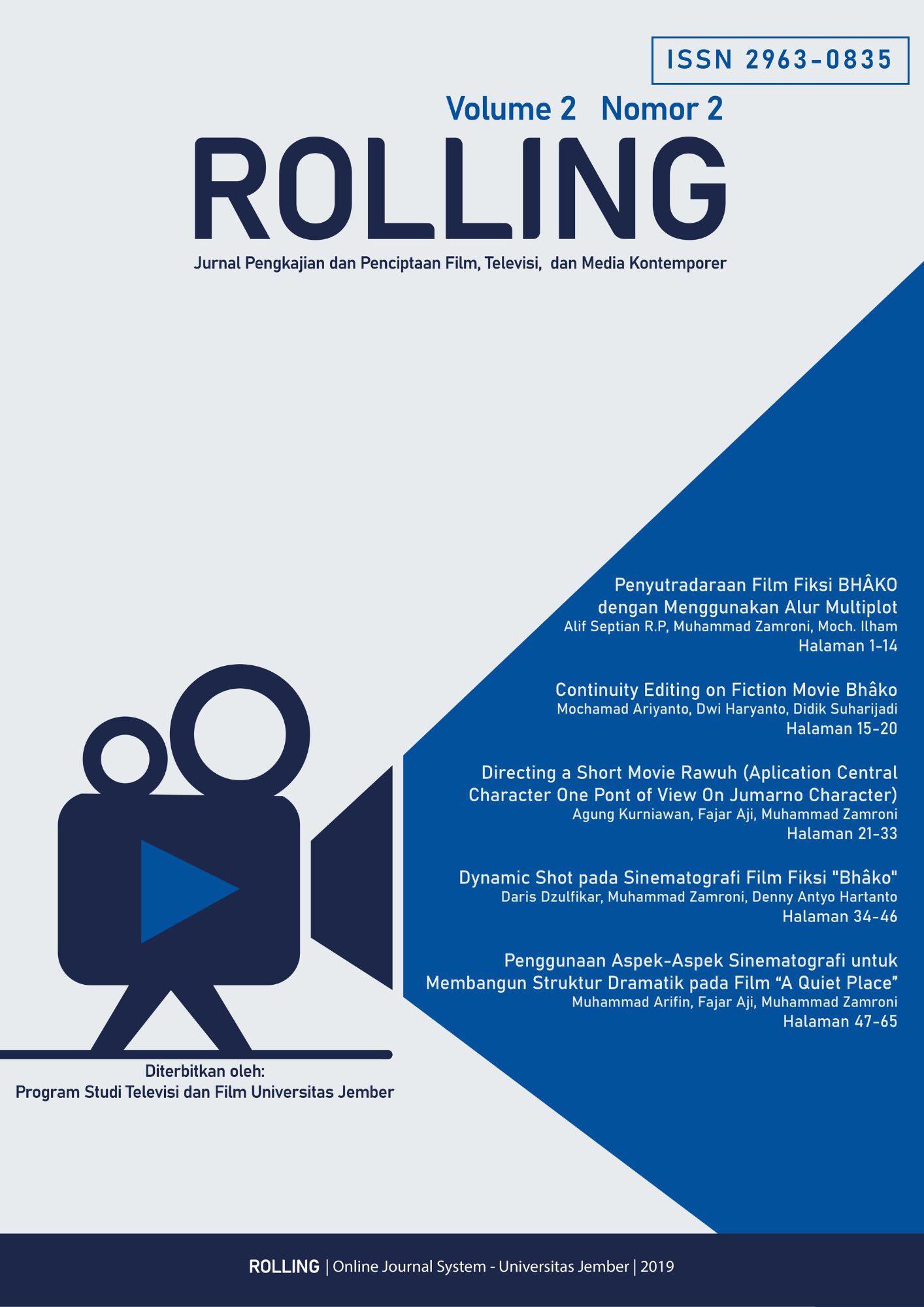Directing a Short Movie Rawuh (Aplication Central Character One Pont of View On Jumarno Character)
Penyutradaraan Film Rawuh (Penerapan Central Character One Point of View Pada Karakter Tokoh Jumarno)
Keywords:
film director, central character one point of view, Indonesian migrant worker, penyutradaraan, tenagakerjaindonesia, TKI, makelarsapi, migrant workerAbstract
Indonesia is one of the countries which discloses migrant workers as an insolubility issue where several laborers are choosing illegality way of being migrant apprentices. Most reasons are caused by lack of understanding placement and protection procedures, limited information to access international job vacancy, inequitable registration through the unauthorized bureau, and lack of government involvement. As a result, many workers were unpaid and faced violent. In addition, human trafficking is also encountered migrant workers. Consequently, they are deported to their origins. Based on those backgrounds, the author would convey these issue into fiction movie through parents viewpoint as the person who left by migrant workers (Rabiger and Cheerrier, 2013:115). cinematic point of view, central character one point of view will be used to build narrative elements and cinematic elements in the film Rawuh, from the pre-production, production and post-production stages. RAWUH could depict Indonesian civilization, especially migrant worker issue that happened in Jember. The creator believes that directing with central character one viewpoint technique needs to develop in the future, especially on the storytelling scheme, mise en scene, cinematography, exploration of sound design, and editing.
Downloads
Downloads
Published
How to Cite
Issue
Section
License
Permission Authors still has the right to duplicate, download and distribute of the published material as long as the author and source are cited. Any violation found in future of any copyright come in notice, then the author will be responsible for getting sanction in accordance with prevailing regulations.



